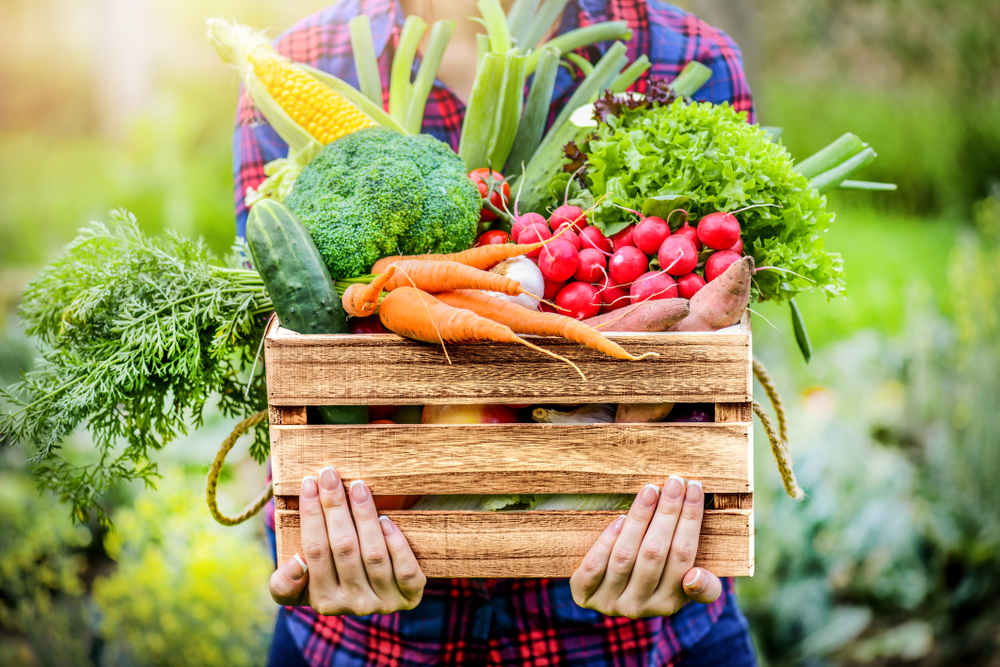Food is one of the most valuable resources this world has to offer. The origin of all food comes from farming, and without it, life on this planet wouldn’t be able to be sustained. Both sustainable agriculture and industrial agriculture share a common goal, and that is creating food. However, their path for reaching this end goal is different. This blog will go over the differences between sustainable agriculture and industrial agriculture and why we should care about how we obtain our food.
What is Industrialized Agriculture?
The industrialization of agriculture commenced after World War II where food scarcity and hunger were a big problem. Industrialized agriculture was a way of addressing global hunger and making food grow quicker and more abundantly. This global shift in farming has come with many costs. Industrialized agriculture is highly mechanized, relying on chemical inputs like:
- Fertilizers
- Pesticides
- Non-therapeutic antibiotics
On the other hand, sustainable agriculture utilizes methods that protect the environment, animal welfare, public health, and human communities.
How Was Agriculture Industrialized?
The United States has always been quick to embrace industrialization and technology. Following World War II, as war technology was repurposed for civilian use, the belief that scientific engineering made things better was common. Especially for the people who lived through the great depression, the industrialization of food not only seemed like a good idea, but was critical for the rapidly growing population at that time. This led to the change in farming methods, which moved towards specialization, mechanization, and an ever-increasing demand for fossil fuels. Tractors got bigger, chemical fertilizers became more potent, improved irrigation systems forced dry areas to produce fruit, animals were relocated into controlled confinement, and seed genes began to be spliced.
The Impacts of Industrial Agriculture
While the industrialization of food may have been necessary in those times of war and food scarcity, today, we have options. The rationale behind industrialized agriculture was to ensure cheap, safe food supply for a growing population. In some ways, we can say that goal was met. Americans spend 6.4% of their income on food. This is the lowest percentage in the world! On the other hand, industrial agriculture has not solved world hunger. In the US, nearly 13% of households experience food insecurity. Worldwide, one in nine people are undernourished.
The cheap grain has led to the proliferation of high-sugar, high-fat, and meat-rich diets. This has caused a massive public health crisis, with more people suffering from heart disease and diet-related diseases such as diabetes. Besides not being good for the people, it also has adverse effects on the environment. Industrialized agriculture is known to:
- Produce greenhouse gases
- Pollute the air
- Contaminate water
- Destroy wildlife
Sustainable Agriculture
With industrial agriculture consuming infinite amounts of resources without replenishing them, an alternate solution must be found. Fortunately, a farming method that follows agroecological, organic, and regenerative practices exist: sustainable agriculture. This method produces its inputs (fertilizer from animals or feed grown from the ground) and manages its outputs (manure and crop waste) in a closed loop. It contributes to:
- Soil fertility
- Clean water systems
- Biodiversity

Benefits of Sustainable Agriculture
Environment
Authentic sustainable farms do not use fertilizers, chemical pesticides, or genetically modified genes. They also do not dispose of large amounts of untreated manure by spreading it in qualities that are toxic to the cropland. Instead, they:
-
- Grow a diversity of crops
- Raise animals primarily on pasture
- Use techniques such as crop rotation
- Use cover cropping
- Use beneficial insects and other non-synthetic methods of pest control and fertilization
These practices not only increase organic matter in the soil, but also sequester carbon and support biodiversity.
Public Health
Without the use of hazardous chemicals found in pesticides and other industrial farming products, sustainable agriculture offers farms and surrounding communities a safer environment and a food product with zero chemical residues.
Animal Welfare
Sustainable farmers raise their animals in ways that allow them to graze and forage freely outdoors, without the stress and illness that is common in factory farms, also known as Concentrated Animal Feeding Operations (CAFOs).

Local Economies & Workers
Sustainable agriculture supports many local independent businesses rather than one company owning the entire supply chain. Because these farms are smaller than their industrial counterparts, they still purchase goods from local vendors. This helps boost and support local economies, providing more job opportunities to locals.
Industrial agriculture has more cons than pros. It harms the environment, animals, and people in many different ways. Sustainable agriculture is the ideal alternative that will secure the future of the generations that are to come. Searching for ways to change the world for the better is our role as human beings residing on this delicate planet. Whether it be sustainable agriculture or using architecture to promote sustainability, we can all do something to change the world. If you’re looking for a way to positively impact the world, Aceneca would love to hear more about you!
